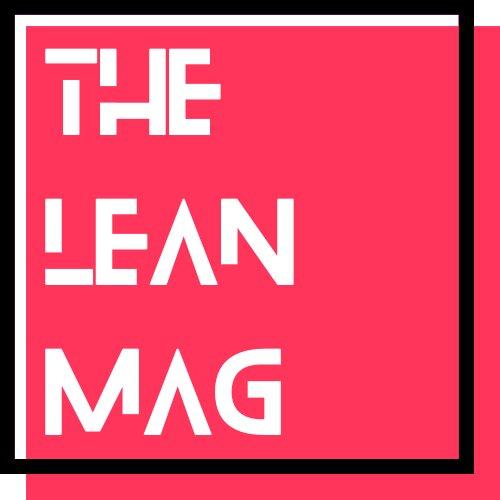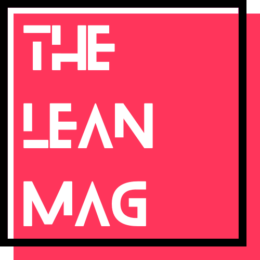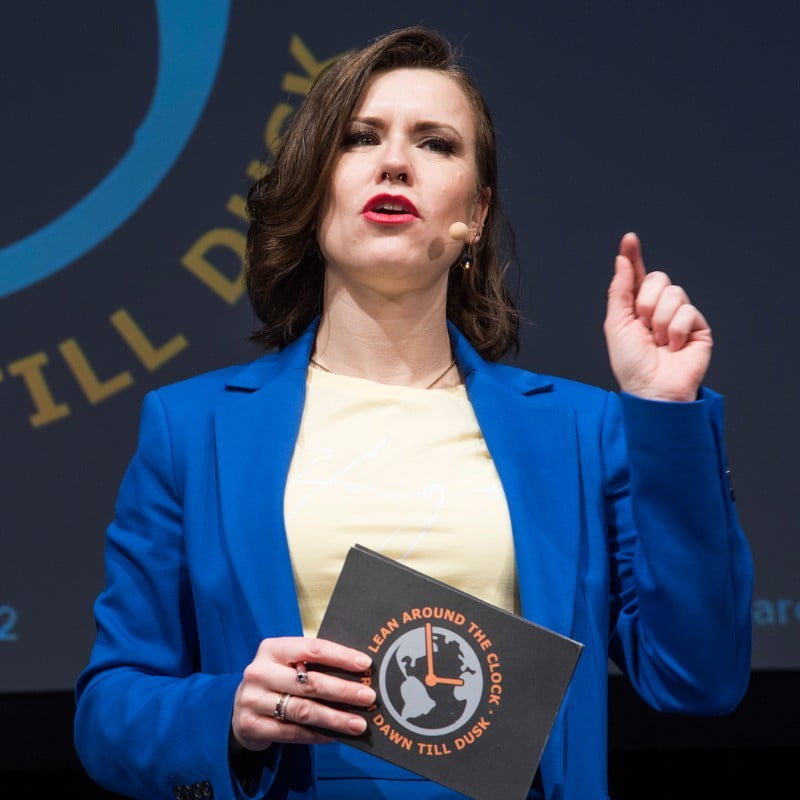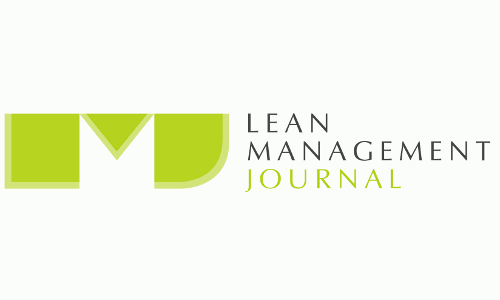What if we just break down the walls separating Lean and Agile?
This article is provided courtesy of theleanmag, a content partner of the Operational Excellence Society.
What I like most about “Lean” or Kaizen is that when you apply it in the correct way and in the way it usually was designed to be implemented, you can make people’s work easier and less stressful. To me that is the main thing about it. The second thing is that – at least to me – when having Kaizen in place and processes are harmonized it all appears like an orchestra.
Every method or tool can be applied of course alone, however without connecting them to a holistic thinking driven by leadership and individuals at the same time, one method might fail. My motivation is wanting to make people’s work lives better by avoiding unnecessary and absolute nonsense work steps.
Is or was Agile something completely new to me as a Kaizen Professional?
From the perspective of a person with a „Lean“ or Kaizen background Agile did not sound that revolutionary and “new” as it might have to others who started jumping on the wave some years ago and especially to those who are new to general topics like structured and systematic ways of working or a holistic thinking.
Well, if we limit it down to “a way of thinking” agile is not that different to “Lean” or Kaizen. Both are ways of working and guidelines or frameworks that are supporting the growth of knowledge of “how” something can be done or how you look at a situation. It helps to gain knowledge and maybe to gain “control” over a lot of loose ends that are now put into order and you work through it step by step.
To me it always seems like there are people following two different gods, trying to defend their believes. If you dig deeper into it, you might find out that there are so many things that are parallel in the way a situation or a problem is handled.
A study from 2019 by Jan Fischbach shows very structured the influences people had on each other back in the days and I need introduce you to his findings in the three following pictures, that say more than a thousand words. The study took more than 5 years and thanks to it, the Scrum guide carries the words “Scrum is based on Lean thinking” in it.
Figure 1- Social network for product owner concepts; J. Fischbach, 2019 – “150 years of Scrum”
Figure 2- the influence of scientific management on “Lean” and Scrum; J. Fischbach´, 2019 – “150 years of Scrum”
Figure 3- Social network for Scrum Master concepts – J. Fischbach, 2019 – “150 years of Scrum”
I got in touch with Jan in 2021 and I wish I had known about his study and his research already a while ago.
Back in 2018 I very often wondered, okay “what’s the point?”.
I read different studies and papers from around the world to find out THE difference, just for me personally. If you moved the focus from: where in the process both ways of thinking are applied and moved it more towards: what do both ways of thinking want and why, you get to the meta level.
After my research for my own Masters’ Thesis and interviews with different experts from both “Lean” and agile communities, the only thing that differentiates both that was left over was how both ways of thinking developed, what drove the development in the second of their development. This is what Jan’s and my approaches have in common, the period of development and the influence.
The perspective I had all the time when digging deeper into the topics was: How did they even develop to what they are now? Also, the level of complexity plays a role here. It is not said that when there is a complex environment that you should be using agile only or Kaizen only. What both totally have in common after I looked at both from a different angle are the following:
- sense of urgency and an initial trigger to start it all
- the development of principles to ensure one way of working
- the existence of a certain mindset
- employees as most important factor who
- work in cross-functional and self-organized teams and create value
- both seek for efficiency and want to increase customer satisfaction.
I also had a look at “what would be needed in an organization to make it a success.
Here is how I broke it down:
- What is the motivation and the main target of using one or the other?
- What is the mindset and how did it develop?
- What are their principles and values?
- What are methods or frameworks?
- How can one or the other be integrated into the strategy of an organization and how can it be connected to target setting systems?
- How is the leadership style in one or the other?
- How is an employee within the environment of “lean” or agile seen?
Of course, one might say “wait what about the tools they use and the way they are used?”.
Yes, I do know and am very aware of all the comparisons of both and should I tell you what? In the majority of the cases of those comparisons I found it only came down to comparing “Lean” and Scrum and not “Lean” and agile. The majority of the papers, studies and articles I read state from the beginning that they would compare “Lean” and Scrum and I often wonder why. Because that would be like comparing only one method from “Lean” with complete agile.
That totally does not add up, at least not to me. I also contacted a professor who published a paper, and the reply was that Scrum is the most known of agile frameworks, which is why he chose to do “his” comparison based on “Lean” and Scrum only and taking it for whole Agile. I was a bit stunned and shocked. You cannot look at Scrum and say this is Agile only. There are so many more frameworks that are totally left out in most of those kinds of comparisons and literature and it was really hard to find good literature on other frameworks. And again, this was in 2018. The world as turned 4 times since then, there might be more today.
And to now reply on the initial question: Was Agile something new to me back in the days? No it was not. It also follows a common sense, and the way of thinking is very much alike. It is even proven that some of the actual methods used in the frameworks of agile were inspired by methods of “Lean”. Thanks to Jans’s study connecting the people influencing each other, we today know and understand why.
Well, what else is there to say? Implementing the one or the other is a change of a culture and the way of working as such. All the Change Management aspects one can imagine are and will be happening, if you like it or not. The classic thing: change curve by Kuebler/Ross. Depending on where the people are or how much they feel gravitated towards the topic you can observe their behaviour and draw the line to the change curve.
I sat in so many “Agile Barcamps/Conferences” or “Lean Conferences” and I heard so often that Leadership plays a big role and that it is all connected to change. Change is what the people must deal with. What is most important here is patience and trust. Patience to never give up and trust into yourself and the system that it will work out. What both “worlds” combine is that you must react fast based on the customer’s development and needs. I tend to say that every is company depending on what’s being produced or delivered as service, has their own heartbeat.
Lastly, I cannot help but make the reference to Mari Furukawa-Caspary’s book “Lean auf gut Deutsch” in which she points out how important it is to understand the Japanese methods not only from what they aim for but mostly what the original Japanese word means and how the meaning gets lost the more you translate it from Japanese to English and then from English to another language.
This knowledge has an influence on how you will transfer knowledge in the future. It is inevitable to go back to the primary source to understand why things are as they are now and even more to understand why it is making no sense to keep working in silos. Whether they be named “Lean”, “Agile”, “Methods Time Measurement” or even “Six Sigma”.
Currently there is a small group of people in Germany working together to bring the communities of Agile, Scrum, Methods Time Measurement, BPMN and Lean together.
What we know as of today is: We all want to help organizations to improve and to be better in what they do. Scientifically it is proven, that we come from the same source and direction, now we need to accomplish that in real life. One big step will be next year’s “Lean Around the Clock”, where we’re inviting all the communities to meet each other.
Usually, the Lean Around the Clock is the biggest German speaking Lean Event and Lean only. In 2023 we want to offer a wider range of topics on stage and more opportunities to explore all the topics. We already have listings for international speakers from different countries and I’m thankful for being part of the new generation of organizing that event.
Our goal is to start breaking down the walls and to walk open minded into a future that holds partnerships instead of competitor ships in it. You’re happily invited to join the movement.
About the Author
Nadja Böhlmann lives in the Eastern part of Germany two hours south of Berlin. She spent the first eight years of her professional career as an officer in the logistics department of the German Armed Forces. She holds a bachelor’s degree in business administration and a master’s degree in lean operations management.
After leaving the Army as a first Lieutenant, she first worked as a student trainee in the painting and drywall construction industry in the area of process optimization for construction sites at Malerwerkstätten Heinrich Schmid. Later she joined the Kaizen Institute as a Trainer and Consultant. She currently works for the Finnish family-owned company Teknos as global Group responsible for implementing Kaizen worldwide.
Already in 2009, the topics of Lean Management and Kaizen aroused and inspired her. From that day on, she was striving to focus her entire personal development on becoming a part of creating a better working environment for people and employees, or helping employees to be encouraged to question their own actions and to wanting to change them accordingly.
Nadja Böhlmann herself warns top executives to not start with Kaizen if they are not aware beforehand that this step of cultural change will consume a lot of energy and attention. She says, “If you’re not willing to deal with all that, don’t start kaizen and don’t think any further about running a sustainable and growth-oriented company!”







